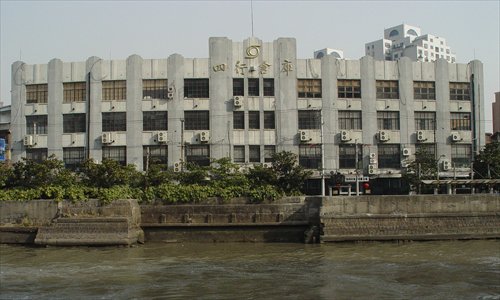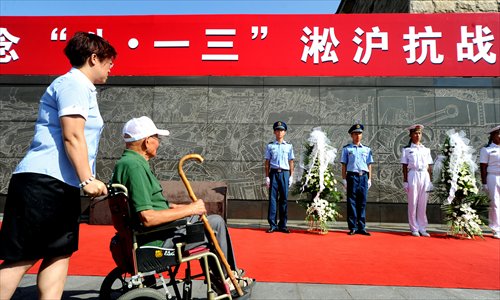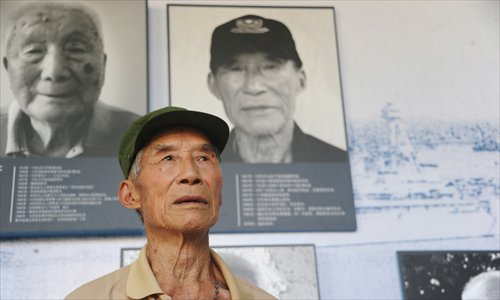HOME >> CHINA
Recreating history
Source:Global Times Published: 2015-7-2 20:08:01

The bullet holes visible on the Sihang warehouse's walls are the original holes. Photo:CFP

The whole building will be restored to its original post-battle appearance. Photo:CFP

The whole building will be restored to its original post-battle appearance. Photo:CFP

Veterans commemorate the 76th anniversary of the battle at the Battle of Shanghai Museum on August 13, 2013. Photo:CFP

Zeng Xiangao, a veteran of the war, remembers the war in the Battle of Shanghai Museum. Photo:CFP
Seventy years have passed since the end of the War of Resistance against Japanese Aggression (1937-45) and several new memorial museums are being built for the anniversary. Some of the museums are dedicated to members of the Kuomintang-led military that fought on the front lines.
In August, the Sihang warehouse in Shanghai will be restored to reconstruct an intense defensive battle that took place there.
The whole building will be restored to its original post-battle appearance.
The bullet holes visible on the Sihang warehouse's walls are the original holes which were later filled in after the Battle of Shanghai. These holes will be restored to their original appearance to show the severity of the battle.
A new square and a series of sculptures will also be built to depict the bravery of the Chinese soldiers.
Using the Lugou Bridge Incident as a pretext, Japan launched an invasion of China on July 7, 1937. The incident marked the beginning of full-scale war between China and Japan. The Japanese Army invaded China from the north and met heavy resistance from the Chinese government's army when while moving south. A major battle erupted in Shanghai on August 13. Though the Chinese army eventually lost the Battle of Shanghai, the battle dragged the Japanese into almost a decade of war and eventual defeat.
Though many young Shanghai residents don't know about the defense of Sihang warehouse, the defense is well remembered for its bravery by the elderly residents. It took place from October 27 to November 1, 1937 and it signified the beginning of the end of the Battle of Shanghai.
A total of 423 soldiers, utilizing the thick walls of the warehouse, were able to hold off the Japanese force and help hundreds of thousands of civilians and soldiers to evacuate. The brave defense lifted the morale of the Chinese military and, due to the battle's proximity to Shanghai's international district, was reported around the world.
For decades, the warehouse was used as an office building. Only a small space had been provided for visitors that wanted to commemorate the defense. However, some members of the Shanghai People's Congress have called for the warehouse to be turned into a war museum for many years.
The Shanghai government restored the warehouse with the aim of reflecting the objective truth of the battle, which includes giving credit to the Kuomintang-led army that played a major role in fighting front line battles.
Global Times
Posted in: In-Depth